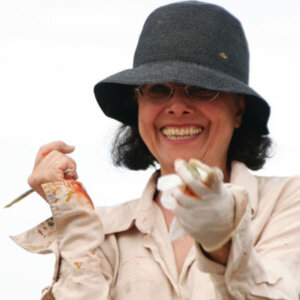Parvin studied at the Chouinard Art Institute, known today as the California Institute of the Arts, and graduated with a Bachelor of Fine Arts degree. Moving from story illustration, to advertising illustration, to fashion illustration, and finally to fine art has  been an interesting and rewarding journey for Parvin. Her time at Chouinard allowed her to master painting figures and landscapes. Her portfolio of figure drawings provided her with a position in an advertising company immediately upon
been an interesting and rewarding journey for Parvin. Her time at Chouinard allowed her to master painting figures and landscapes. Her portfolio of figure drawings provided her with a position in an advertising company immediately upon
graduation.
Advertising illustration demanded discipline in meeting publishing deadlines while producing imaginative artwork. The experience was invaluable in helping her evolve into an artist producing museum quality art. She eventually moved from Los Angeles, left the advertising world and returned to fine arts. Left with more creative freedom and less
obligations, she delved into the vastness of landscape art. Parvin does not do preliminary sketches or thumbnails prior to starting a painting; she dives headfirst, usually by pouring paint directly on the canvas. The intimidation of a blank canvas never deters her.
The new “ism” in art might be Digitism. Digital painting on a computer may turn
out to be the most creativity expanding “ism” in the history of Western Painting. The digital process offers artists opportunities never before possible. Many collectors are excited by this relatively new genre as well, and are eager to add them to their collections. Digital painting frees the painter from the physical limitations of traditional painting materials and the toxicity of paint solvents and opens the door to
interpret subject matter in a novel form; express abstract thought more fluidly; and apply paint with exactitude or with abandon.
A digital painting may mimic any of the styles of past periods: Classism, Romanticism, Impressionism, Cubism, Expressionism or any other “ism”, or it may use computer software tools to explore new painting horizons. The artist may start with a photograph or a blank screen, then add lines, shapes, colors, textures and patterns to create the painting. The education, talent and skill of the artist are equally important whether an artist utilizes a physical brush or a digital one. Art making involves constant decision making. Whether at the easel or on the computer, the more capable the artist, the more imaginative and appropriate the decisions. A computer does not make anyone an artist.
Microsoft and Boeing executives are among those who collect her work worldwide. Her paintings are exhibited in museums and galleries in Florida, Montana and Washington.